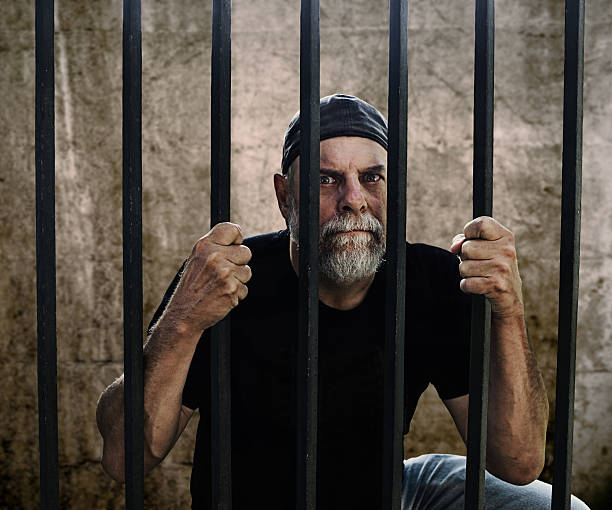
In State v. Irby, the WA Court of Appeals held that an inmate’s 6th Amendment rights were violated and has case was prejudiced when jail guards opened and read his confidential “jail mail” letters written to his defense attorney.
BACKGROUND FACTS
In April 2005, Irby was charged with one count of burglary in the second degree, alleged to have occurred on March 6, 2005, and the following counts alleged to have occurred on March 8, 2005: one count of aggravated murder in the first degree with an alternative allegation of first degree felony murder, one count of burglary in the first degree, one count of robbery in the first degree, three counts of unlawful possession of a firearm in the first degree, and one count of attempting to elude a police vehicle. The latter charges arose out of a robbery and bludgeoning death.
In January 2007, a jury found Irby guilty of murder in the first degree with aggravating circumstances, felony murder in the first degree, and burglary in the first degree. Four years later, the Washington Supreme Court reversed the judgment of conviction and remanded the cause for a new trial in light of the court’s determination that Irby’s due process rights had been violated during jury selection. See State v. Irby, 170 Wn.2d 874, 246 P.3d 796 (2011).
Irby’s retrial was held in 2013. The State prosecuted the same charges that were brought during the first trial and Irby was convicted as charged. Notably, at the retrial, Irby was allowed to proceed pro se. He also voluntarily absented himself from the trial. We subsequently reversed the judgment of conviction and remanded the cause for yet another new trial because the trial judge had erroneously seated a juror who had demonstrated actual bias against Irby during voir dire.
In March 2016, pretrial proceedings began for Irby’s third trial. He was represented by a public defender. In mid-March, the State filed an amended information charging Irby with one count of premeditated murder in the first degree and one count of burglary in the first degree. Two days later, Irby appeared in court and was arraigned on the charges. He entered pleas of not guilty.
In mid-March and again in late March, Irby requested to represent himself. Following a colloquy with the trial court in mid-April, Irby’s request was granted. Four months later, Irby filed a pro se motion to dismiss the charges against him. In his motion, Irby alleged misconduct by jail guards, claiming that (during the period of time during which his public defender represented him) they had improperly opened outgoing mail containing privileged legal communication intended for his attorney.
The trial court denied Irby’s motion. The trial court did determine that the jail guards had violated Irby’s right to counsel by opening and reading privileged attorney-client communications. Although Irby argued that the trial court’s determination mandated that a presumption of prejudice be imposed, the trial court placed on Irby the burden of proving prejudice and concluded that he did not do so.
One month later, Irby informed the trial court that he had decided not to attend the trial and waived his right to be present at trial.
After a jury was selected without Irby’s participation, the evidentiary stage of Irby’s third trial began. Irby did not attend the trial. The State presented its case in chief and gave closing argument. No defense or closing argument were presented on Irby’s behalf.
The jury returned verdicts finding Irby guilty as charged. Irby was sentenced to concurrent terms of incarceration of 388 months for the murder in the first degree conviction and 54 months for the burglary in the first degree conviction.
ISSUES
1. Did a State actor participate in the infringing conduct alleged by the defendant?
2. If so, did the State actor(s) infringe upon a Sixth Amendment right of the defendant?
3. If so, was there prejudice to the defendant? That is, did the State fail to overcome the presumption of prejudice arising from the infringement by not proving the absence of prejudice beyond a reasonable doubt?
4. If so, what is the appropriate remedy to select and apply, considering the totality of the circumstances present, including the degree of prejudice to the defendant’s right to a fair trial and the degree of nefariousness of the conduct by the State actor(s)?
COURT’S ANALYSIS & CONCLUSIONS
First, the Court of Appeals decided the “State actors” engaged in misconduct.
“Irby’s motion to dismiss alleged that the confrontation between himself and the State involved conduct by jail guards employed by the county jail in which he was being housed,” said the Court of Appeals. “Thus, Irby established that the conduct underlying his claim involved State actors.”
Second, the Court decided that the jail guards’ conduct infringed upon his Sixth Amendment right.
“Plainly, a defendant’s Sixth Amendment right to assistance of counsel is violated when the State intrudes into a privileged attorney-client communication,” said the Court of Appeals.
The court reasoned that here, Irby’s motion to dismiss—and accompanying exhibits and addendum—alleged that he had sent 14 pieces of confidential correspondence containing privileged information to his attorney that, he argued, had been improperly opened and read by jail guards in the Skagit County Jail. The correspondence constituted Irby’s handwritten statements on both a “Public Defender Request Form” and jail kites—multi-purpose request forms available to inmates in the Skagit County Jail.
Prior to sending the correspondence, Irby folded each piece of paper in half, sealed each piece of paper with tape, and written on the outward facing side, “CONFIDENTIAL,” and “ATTORNEY BOX.” Consequently, the Court of Appeals said the folded and taped pieces of paper were intended to be confidential and included privileged attorney-client information. “Thus, the aforementioned correspondence from Irby to his counsel contained privileged attorney-client information protected by the Sixth Amendment.”
Third, the Court of Appeals held that the jail guards’ opening and reading of Irby’s privileged attorney-client correspondence infringed upon his Sixth Amendment right to counsel. The parties do not dispute the trial court’s finding that jail guards had opened and read Irby’s privileged attorney-client communications. “Thus, the jail guards—and therefore the State—infringed on Irby’s Sixth Amendment right to counsel. This constitutes misconduct, within the meaning of CrR 8.3.”
Finally, the Court of Appeals decided Irby was prejudiced by the misconduct:
“More than half a century ago, our Supreme Court ruled that, when State actors pry into a defendant’s privileged attorney-client communications, prejudice to the defendant must be presumed . . . We must assume that information gained by the sheriff was transmitted to the prosecutor and therefore there is no way to isolate the prejudice resulting from an eavesdropping activity, such as this.”
The Court of Appeals further reasoned that recently, our Supreme Court in Pena Fuentes reaffirmed this ruling and, in light of a State actor’s eavesdropping on privileged attorney-client communications, imposed a presumption of prejudice.
Furthermore, because the State actors here at issue—jail guards—infringed upon Irby’s Sixth Amendment right, prejudice must be presumed. Thus, the trial court erred by not imposing a presumption of prejudice after it determined that the jail guards had opened and read Irby’s communications containing privileged attorney-client information.
With that, the Court of Appeals reversed the order denying Irby’s motion to dismiss and remanded this matter for an evidentiary hearing with instructions to the trial court.
My opinion? Excellent decision by the Court of Appeals. It most certainly violates a defendant’s constitutional rights for state actors like jailers, law enforcement and Prosecutors to read mail from an inmate intended for an attorney.
Please read my Legal Guide titled Making Bail and contact my office if you, a friend or family member face criminal charges and are incarcerated awaiting trial. Being in jail is never wise if it can be avoided. Chances are, a qualified and competent attorney can argue for personal release, lowered bail or convince the judge to release the defendant to a family member who is willing to supervise the defendant’s whereabouts.
















